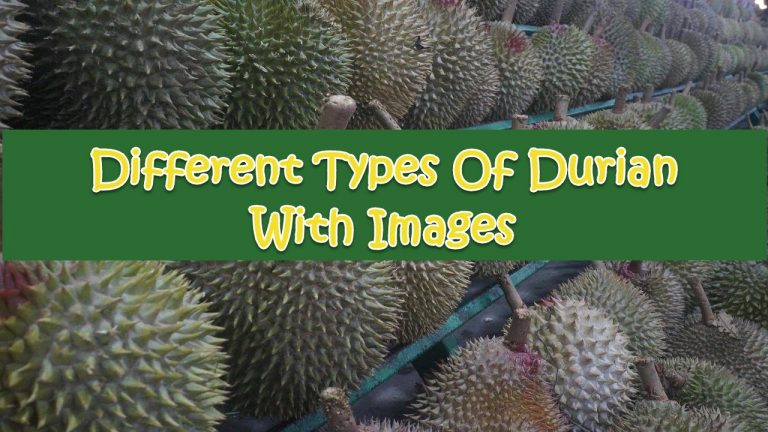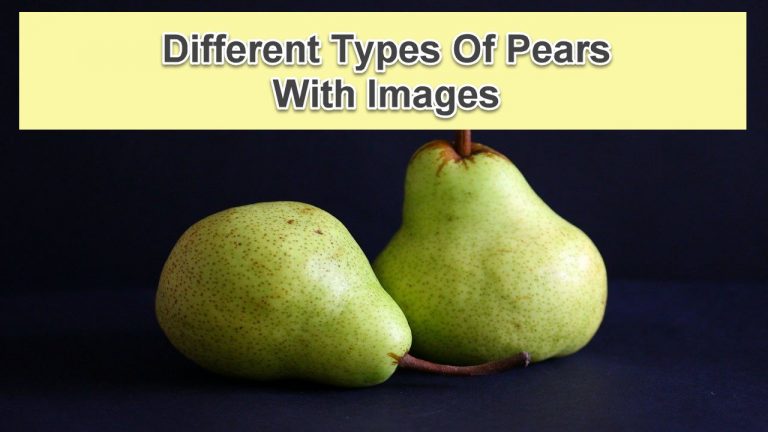8 Different Types Of Yam With Images

Root vegetables are known to be one of the essential foods in most nations’ diets. These vegetables are an underground part of plants which are critical in agricultural and culinary fields. Among which are yams.
Types Of Yam
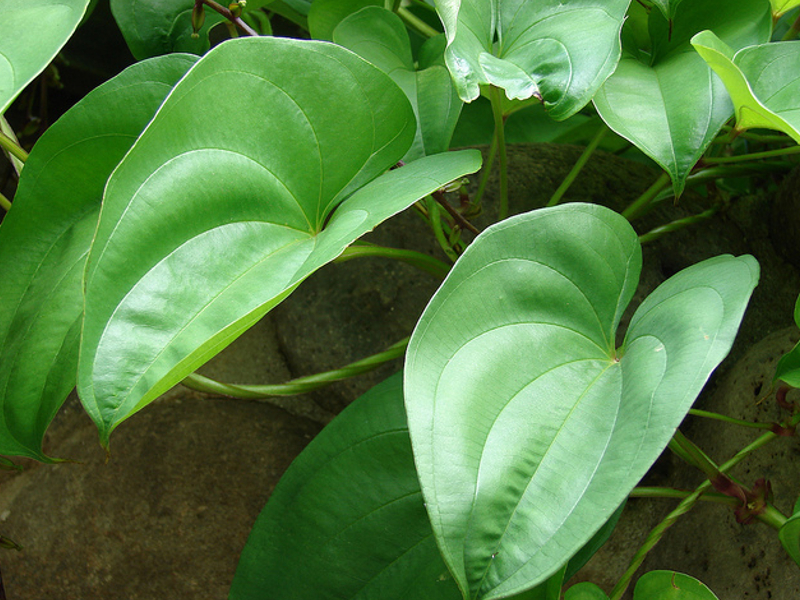
What Is A Yam?
Technically, the term yam is the common name for various plant species forming edible tubers. Yam with a rough texture is called a tropical yam. They have moist flesh which vary in colors.
These tubers can have orange flesh, bright orange flesh, white flesh, and the likes depending on the varieties.
These vegetables are cultivated in tropical regions such as South America and the Caribbean, West Africa, Oceania, and Asia.
Note that raw yams are toxic, so it is a must to cook them before eating.
How To Grow And Harvest Yam Tuber
In order to successfully grow the root vegetables, you will need a well-drained and fertile soil, with a high organic material content. Yams also need a lot of water during the planting season.
Harvesting yams can be done once the leaves start to turn yellow. To do so, carefully dig the soil around the tuber and try not to cut them. You can use a garden fork in digging out the tubers if the soil is loose and loamy.
Yams are usually planted around October to November, and harvested during autumn. There are also farmers who plant these vegetables during the dry season, between January and March.
Health Benefits Of Yams
Aside from being a good source of fiber, yams are also rich in manganese and potassium. Thus, eating yams help support metabolism, heart function, bone health, and human growth. These nutrient-dense tubers are as well a great source of antioxidants.
They help improve brain health, blood sugar control, and help reduce inflammation. Yams are indeed versatile and healthy foods ideal to be added in your diet.
The nutritional content of yam depends on its type. Yams with white inner flesh are higher in potassium and fiber than those yams with colorful flesh. Meanwhile, yams with orange, yellow, and purple flesh are rich in vitamins A and C, and complex carbohydrates.
To help you decide which type of yams to add in your diet, let us get to know the different types of yams.
Yams are actually not sweet potatoes. They belong to the Dioscorea (lily) family, while sweet potatoes are members of the Ipomoea (morning glory) family. Yams are drier and starchier compared to sweet potatoes. However, some individuals (specially in the US) refer to yams as sweet potatoes due to its various similarities. To learn more about these yam varieties, scroll down and continue reading…
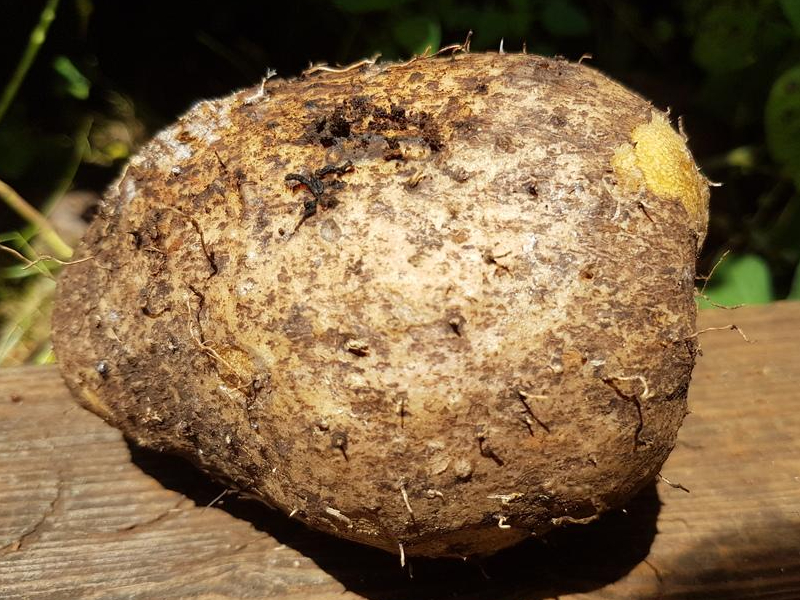
#1. Lesser Yam (Dioscorea Esculenta)
Lesser yam, also known as the Chinese yam, is an all-time favorite tuber in Southern Vietnam and India. This type of yam is oval in shape, and weighs an average of a half to two pounds. The Chinese yam has a hair, brown outer skin, with white or pale yellow flesh. It also has a firm flesh with a mild flavor.
Its inner flesh color ranges from white flesh to cream, and it is smooth and has no fibers. And lesser yam leaves are soft and heart shaped. This yam is usually grown on the subcontinent of India, South Pacific islands, and in southern Vietnam.
The cooking tips for lesser yam can be boiled and mashed, baked, or roasted. Since this root vegetable has a natural sweet flavor, it has become the Asian version of sweet potato desserts. Lesser yams have smaller tubers compared to most yams, but still it is one of the tastiest yams all over the world.
Lesser yams are available in most grocery stores.

#2. Okinawan Yam (Ipomoea Batatas)
Okinawan yams are a dicotyledonous plant and are a member of the morning glory family. Their sizes range from medium to large, and have ovate and tubular shape. This type of yam has a rough and uneven skin, with earthy brown spots and lines.
Okinawan yam has a violet purple flesh. Similar to a true yam, Okinawan yams have a heavily starchy texture.
Cooked Okinawan has an earthy and sweet flavor, and a bit velvety and dry texture.
The young leaves and shoots of the plant known as kandaba in Okinawa, are also edible.
Botanically, this type of yam, also known as the Okinawan sweet potato, is classified as a sweet potato rather than true yams. This is due to the fact that all non-white fleshed sweet potatoes in the US are sold as yams.
Okinawan yams are perfect for your savory recipes. Aside from being sweet, these yams are also a good source of vitamin A, C, manganese, vitamin B6, and dietary fiber. These root vegetables also contain magnesium, carotenoids, potassium, iron, calcium, and protein.
Cooking tips for these yams include baking, roasting, boiling, steaming, or mashing, with or without skin.
If your recipes call for sweet potatoes, these can be substituted with Okinawan yam.
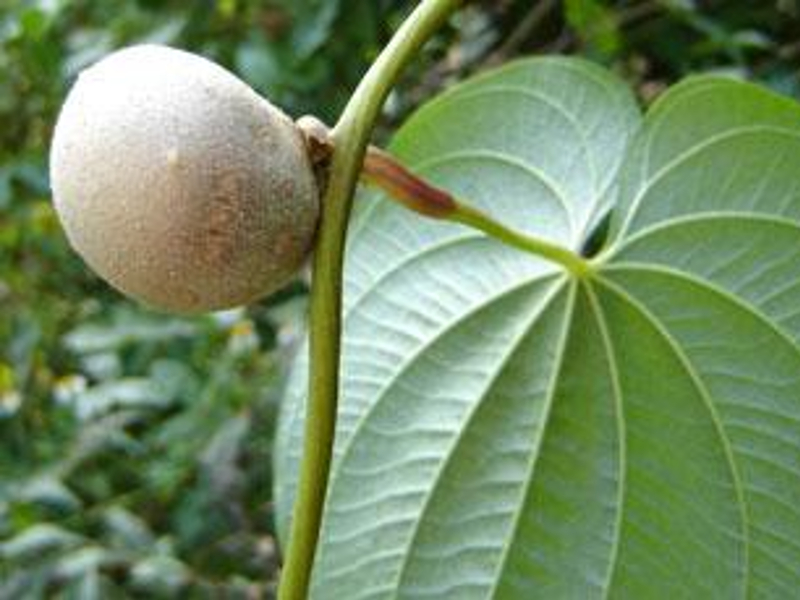
#3. Air Potato Yam (Dioscorea Bulbifera)
Air potato is a species of true yam and belongs to the Dioscoreaceae family. This yam is native to Africa, Asia, and northern Australia. Air potatoes are usually cultivated for its bulbils rather than its tubers. Hence, it is commonly known as the up-yam.
Its skin color ranges from brown, rough, tan or gray, with warts. It has a firm, slimy, and starchy flesh, and a beige-orange in color.
The edible varieties of these tubers usually taste bitter, but can be removed after boiling.
The cooking applications used in preparing air potatoes are still the same with other sweet potatoes and yams. Aside from that, these yams can also be used to treat various diseases such as diarrhoea, conjunctivitis, and dysentery.
However, uncultivated air potatoes growing in wild Florida might be poisonous as they can contain the steroid diosgenin.
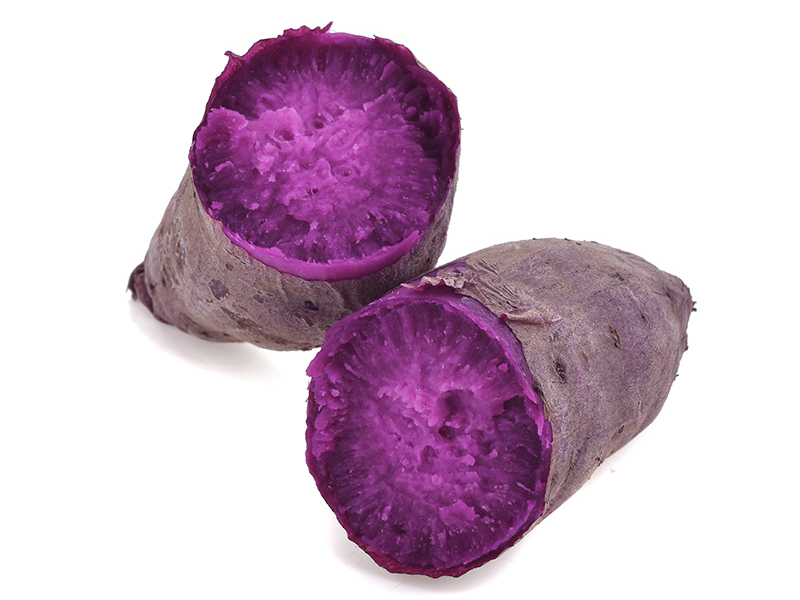
#4. Filipino Purple Yam (Dioscorea Alata)
As the name suggests, these tubers’ flesh color is a vivid violet-purple to bright lavender. However, some varieties have a cream with plain white inner flesh. Purple yams, also known as ube in the Philippines, originated in the Asian tropics. Hence it has been known to people since primitive times.
The edible purple yams have a mildly sweet, earthy and nutty flavor, similar to taro or sweet potatoes. It is widely used for various Filipino desserts like ube cheesecake, ube cake, and crinkles. It is also an ingredient for their famous iced dessert which is called halo-halo.
Meanwhile, purple yam is cooked as a creamy soup in Vietnam, called canh khoai mỡ.
This type of yam is usually confused with violet or purple sweet potato varieties because of its flavor, color, and culinary applications. But like most yam varieties, purple yams have a moisture texture compared to sweet potatoes.

#5. Japanese Mountain Yam (Dioscorea Japonica)
The Japanese mountain yam, also known as East Asian mountain yam, or yamaimo, is native to Assam, Taiwan, Korea, China, and Japan. It has a lightly sweet flavor, with a sticky slimy texture when grated.
This yam has a bright white flesh with a silky texture. It has a light tan outer skin similar to baking potatoes.
Japanese yams are often used as binding agents, toppings for crudite-style salad, soups, noodle dishes, and stir-fries.
Aside from being an ingredient in making savory dishes, mountain yam is also a great source of potassium, fiber, manganese, copper, and antioxidants. It helps boost brain health, improve blood sugar control, and reduce inflammation.
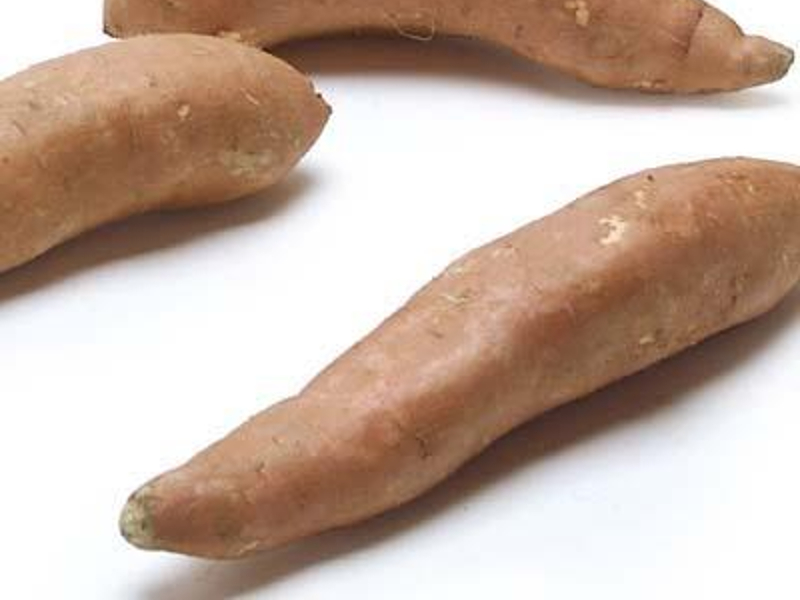
#6. American Yam
Americans refer to sweet potatoes as yams. And the types of sweet potatoes labeled as yams in the country have softer flesh, reddish copper skin color, and bright orange inner flesh. While regular potato types have firmer, paler inner and outer flesh.
Soft sweet potato has a deep orange flesh and a copper skin, while a firm sweet potato has a light orange flesh with a golden outer skin.
Among the American yam sweet potato varieties include jewel, beauregard, and garnet. Once these sweet potatoes are cooked, their texture becomes light and creamy.
The most common sweet potato sold at most grocery stores in the US is the beauregard. It has a reddish skin and bright orange flesh. Its texture is also moist, soft, and slightly stringy. Thus, a perfect root vegetable for mashing. Hence, it is among the moist-fleshed varieties of sweet potatoes in the US which they called “yams“.
These yams are also popular during holidays. These can be made into side dishes, either candied with marshmallows or topped with brown sugar and pecans.
And when it comes to these kinds of dishes, soft American yam sweet potatoes are better than firm sweet potatoes.

#7. White Yams (Dioscorea Rotundata)
The white yam is native to Africa, and is considered one of the most important cultivated yams. Its shape is roughly cylindrical, with a smooth brown skin.
And as the name suggests, white yam has a white and firm flesh. White yams can be made into savory dishes like stews and salads.
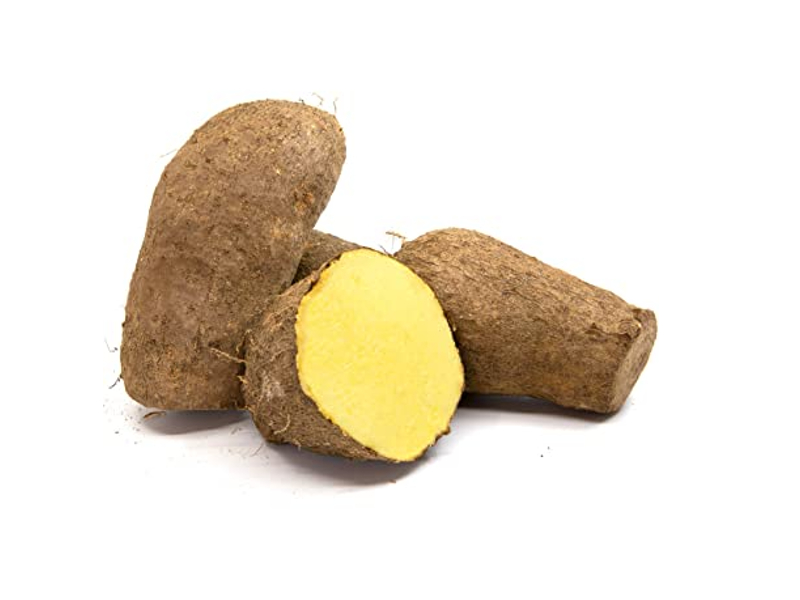
#8. Yellow Yams (D Cayennensis)
The yellow yams are similar to sweet potatoes, but are larger in size and have a thicker skin.
It is also known as Jamaican yam or yellow Guinea yam, and is native to Africa. Similar to the white yam, yellow yam is also one of the most cultivated yams in the world.
Yellow yam contains carotenoids, making its flesh colored yellow. This type of yam is also starchy and dry.
This nutritious tuner is versatile and easy to cook. It is also an excellent source of energy. You can include yellow yam to your sweet and savory recipes like stews and curries.
FREQUENTLY ASKED QUESTIONS
The country with the highest number of yam production is Nigeria as of 2020. The country produced more than 44 million tons which is about 67 percent of the world production. Other countries with higher production include Ghana, Ivory Coast, Togo, Benin, Haiti, and Cameroon.
The most important cultivated yams are the yellow yam (Dioscorea Cayennensis) and the white yam (Dioscorea Rotundata).
Yams are earthy and neutral in taste. Most types of yams are mildly sweet, but flavors may differ depending on the seasoning used in cooking the yam dish.

